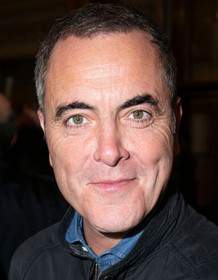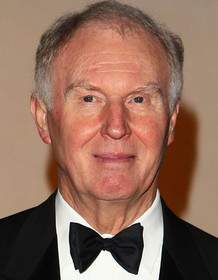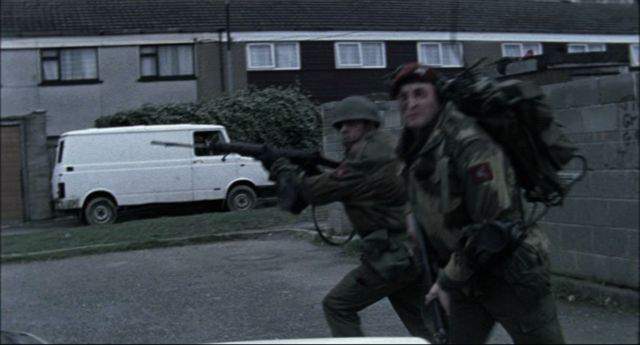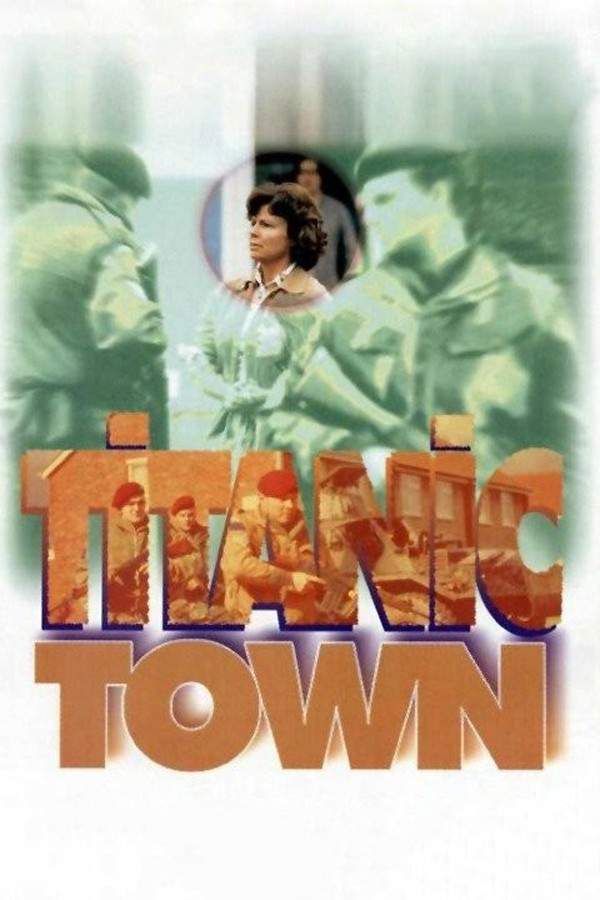Bloody Sunday 2002

In Northern Ireland, a civil rights protest for equal rights takes a tragic turn on January 30, 1972, an event known as Bloody Sunday. As British soldiers open fire on the unarmed crowd, civil rights leader Ivan Cooper finds himself at the center of the escalating violence. The incident results in 13 deaths and numerous injuries, profoundly impacting the region and sparking widespread outrage.
Does Bloody Sunday have end credit scenes?
No!
Bloody Sunday does not have end credit scenes. You can leave when the credits roll.
Meet the Full Cast and Actors of Bloody Sunday
Explore the complete cast of Bloody Sunday, including both lead and supporting actors. Learn who plays each character, discover their past roles and achievements, and find out what makes this ensemble cast stand out in the world of film and television.
External Links and Streaming Options
Discover where to watch Bloody Sunday online, including streaming platforms, rental options, and official sources. Compare reviews, ratings, and in-depth movie information across sites like IMDb, TMDb, Wikipedia or Rotten Tomatoes.
Ratings and Reviews for Bloody Sunday
See how Bloody Sunday is rated across major platforms like IMDb, Metacritic, and TMDb. Compare audience scores and critic reviews to understand where Bloody Sunday stands among top-rated movies in its genre.

90
Metascore
7.6
User Score


92%
TOMATOMETER

90%
User Score

7.6 /10
IMDb Rating

73
%
User Score
Take the Ultimate Bloody Sunday Movie Quiz
Challenge your knowledge of Bloody Sunday with this fun and interactive movie quiz. Test yourself on key plot points, iconic characters, hidden details, and memorable moments to see how well you really know the film.
Bloody Sunday Quiz: Test your knowledge on the historical events and characters portrayed in the film 'Bloody Sunday'.
Who is the main advocate for civil rights in 'Bloody Sunday'?
Jerry
Ivan Cooper
General Ford
Police Chief
Show hint
Awards & Nominations for Bloody Sunday
Discover all the awards and nominations received by Bloody Sunday, from Oscars to film festival honors. Learn how Bloody Sunday and its cast and crew have been recognized by critics and the industry alike.
18th Film Independent Spirit Awards 2003
Best Foreign Film
Full Plot Summary and Ending Explained for Bloody Sunday
Read the complete plot summary of Bloody Sunday, including all major events, twists, and the full ending explained in detail. Explore key characters, themes, hidden meanings, and everything you need to understand the story from beginning to end.
Don Mullan’s politically significant book, Eyewitness Bloody Sunday (Wolfhound Press, 1997), provides a harrowing account of the tragic events that unfolded through the perspective of Ivan Cooper, a Member of the Parliament for the SDLP in Northern Ireland. He played a pivotal role in organizing the Northern Ireland Civil Rights Association march that took place in Derry on January 30, 1972. This peaceful demonstration was marred by violence when British Army paratroopers opened fire on the crowd, resulting in the immediate deaths of thirteen individuals and injuring another, who would later succumb to his wounds 4½ months afterward.
In his quest to raise awareness and fight for civil rights equality, Ivan spearheads a march in Northern Ireland against Unionist rule and British oppression. However, in light of escalating tensions, the British Army imposes a ban on all parades and marches. As the day of the march dawns, British troops line the streets of Derry, creating an atmosphere of intimidation. Among the marchers is Jerry, an ordinary Irishman who, despite his simple life and relationship with his girlfriend, is committed to the cause. He joins Ivan and his fellow SDLP members, driven by a shared passion for justice.
As the British commanders mandate the troops to aggressively make arrests and use deadly force in the event of any Irish provocation, Ivan spreads pamphlets encouraging women and children to join the march. Despite his concerns over the vast military presence, he remains steadfast in his commitment to a peaceful demonstration, insisting that the IRA stay clear of the event. However, a British General named Ford arrives to oversee the operations, with a mindset that perceives the Irish as potential troublemakers. As tensions rise, Ford authorizes a strategic pincer movement to encircle the marchers.
The day unfolds as thousands gather, filled with women and children, yet tensions mount when a faction of young marchers veers off towards heavily fortified checkpoints, leading to a confrontation with British forces. Despite Ivan’s attempts to redirect them, stones are thrown, prompting the British to unleash water cannons and rubber bullets in an effort to restore order. The situation rapidly deteriorates when tear gas is deployed, leading to the harrowing deaths of two Irish protesters.
In a desperate bid for peace, Ivan addresses the crowd, advocating for non-violence as the means to secure independence. However, as the British forces initiate their offensive, the breakaway faction returns, resulting in a complete confrontation. The British fire indiscriminately into the crowds, claiming lives with each gunshot, as Jerry and his friends suffer injuries amidst the chaos. The carnage increases alarmingly, as even those trying to assist the wounded fall victim to the merciless shooting.
As the dust settles, the reality of the carnage becomes undeniable. The British Army, realizing the scale of their lethal overreach in front of media cameras, scrambles for justification, but finds none. General Ford insists that the troops acted only in retaliation, albeit acknowledging that none were injured on the British side. Jerry, gravely wounded and in dire need of medical attention, is tragically obstructed by army roadblocks and succumbs to his injuries.
Finally, Ivan makes it to the overwhelmed hospital, where the stark reality of the tragedy is laid bare with 13 dead and 14 injured. In a shocking turn, the British authorities claim Jerry’s body was booby-trapped, seeking to mislead the public regarding the events that transpired. In response, Ivan declares that the British have not only devastated the civil rights movement but unwittingly gifted the IRA with a monumental victory, setting in motion consequences that would forever change the landscape of Northern Ireland.
Uncover the Details: Timeline, Characters, Themes, and Beyond!

Coming soon on iOS and Android
The Plot Explained Mobile App
From blockbusters to hidden gems — dive into movie stories anytime, anywhere. Save your favorites, discover plots faster, and never miss a twist again.
Sign up to be the first to know when we launch. Your email stays private — always.
Watch Trailers, Clips & Behind-the-Scenes for Bloody Sunday
Watch official trailers, exclusive clips, cast interviews, and behind-the-scenes footage from Bloody Sunday. Dive deeper into the making of the film, its standout moments, and key production insights.
Cars Featured in Bloody Sunday
Explore all cars featured in Bloody Sunday, including their makes, models, scenes they appear in, and their significance to the plot. A must-read for car enthusiasts and movie buffs alike.
Bloody Sunday Themes and Keywords
Discover the central themes, ideas, and keywords that define the movie’s story, tone, and message. Analyze the film’s deeper meanings, genre influences, and recurring concepts.

Unlock the World of Movies with Our Comprehensive Wiki
Dive into our Movie Wiki for in-depth film encyclopedia entries, including cast biographies, production trivia, plot synopses, behind-the-scenes facts, and thematic analyses. Whether you’re researching iconic directors, exploring genre histories, or discovering hidden easter eggs, our expertly curated movie database has everything you need to fuel your cinematic passion.

Similar Movies To Bloody Sunday You Should Know About
Browse a curated list of movies similar in genre, tone, characters, or story structure. Discover new titles like the one you're watching, perfect for fans of related plots, vibes, or cinematic styles.
Quick Links: Summary, Cast, Ratings, More

What's After the Movie?
Not sure whether to stay after the credits? Find out!
Explore Our Movie Platform
New Movie Releases (2025)
Famous Movie Actors
Top Film Production Studios
Movie Plot Summaries & Endings
Major Movie Awards & Winners
Best Concert Films & Music Documentaries
Movie Collections and Curated Lists
© 2025 What's After the Movie. All rights reserved.













































